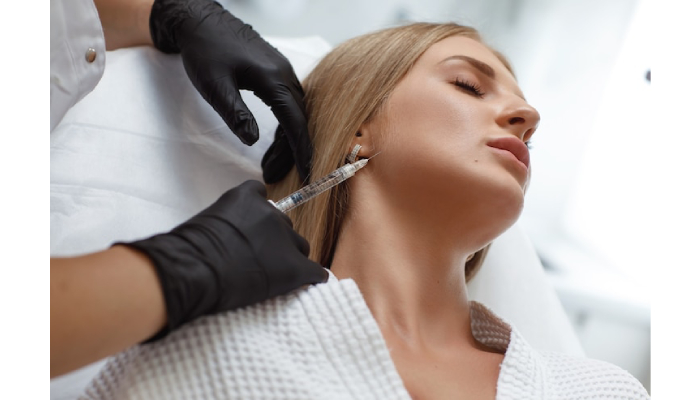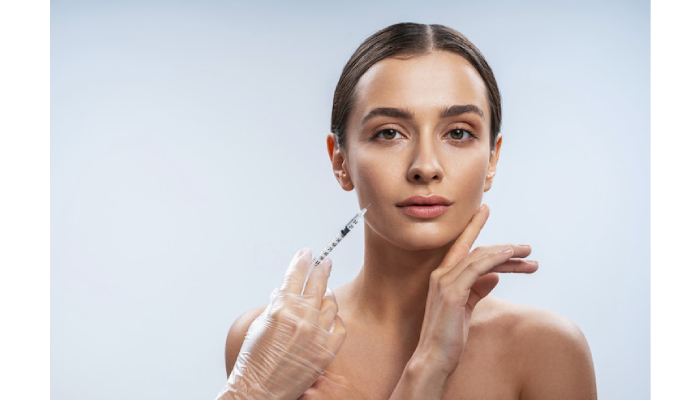
Botox is widely used to reduce moderate to severe wrinkles caused by repeated facial muscle movements, like frown lines, crow’s feet, and forehead creases. It works by blocking nerve signals that cause muscles to contract, which smooths the skin temporarily. The effects usually appear within one to two weeks and last about four to six months before muscle action returns. Several Botox brands exist, each with slightly different dosing guidelines but similar safety and effectiveness profiles. Most studies show significant wrinkle improvement with minimal side effects when done by professionals. Repeated treatments help maintain results over time without serious long-term risks.
What Is Botox and How It Works on Wrinkles?
Botox is a purified form of botulinum toxin type A, primarily used to treat dynamic facial wrinkles caused by repeated muscle contractions. Common target areas include the glabellar lines (frown lines between the eyebrows), crow’s feet around the eyes, and forehead lines. Wrinkles form when repeated muscle movements crease the skin, and over time these creases become more permanent. Botox works by blocking nerve signals that cause muscles to contract, leading to a temporary relaxation of the muscles under the skin. This relaxation smooths the skin’s surface and reduces the visible appearance of wrinkles. The effects of Botox usually start to appear within 5 to 15 days after the injection, with muscle activity gradually returning after about 3 to 6 months as nerve endings regenerate. Because botox treatment in Atlanta is minimally invasive and requires no downtime, it has become a popular option for wrinkle reduction. Treatments are temporary, allowing adjustment of dosage or target areas based on individual needs. While repeated treatments can maintain wrinkle reduction, Botox does not permanently prevent wrinkles from forming.

How Botox Temporarily Stops Muscle Movement?
Botox works by targeting nerve endings at the neuromuscular junction, the spot where nerves communicate with muscles. It binds specifically to these nerve terminals and blocks the release of acetylcholine, a neurotransmitter essential for muscle contraction. Without acetylcholine, the muscle can’t contract, which leads to muscle relaxation. This relaxation prevents the muscle from folding the skin, thereby reducing the appearance of dynamic wrinkles like frown lines and crow’s feet. The muscle paralysis develops gradually over 5 to 15 days after the injection and is temporary. As nerve terminals regenerate and form new connections, muscle activity returns, usually between 3 to 6 months post-treatment. This temporary effect means Botox reduces wrinkles without permanently affecting muscle size. Because Botox selectively targets specific muscles, it minimizes impact on adjacent muscles, reducing unwanted side effects. Repeated treatments do not cause permanent muscle damage; in fact, they may improve long-term wrinkle appearance by consistently limiting repetitive muscle contractions.
Effectiveness of Botox for Moderate to Severe Wrinkles
Clinical trials involving nearly 15,000 participants consistently show that Botox provides significant reduction in moderate to severe facial wrinkles, particularly in areas like glabellar lines, forehead lines, and crow’s feet. Most studies assess results around four weeks after injection, which is when the peak effect typically occurs. Both patients and physicians report much higher success rates with Botox compared to placebo treatments. This effectiveness remains steady across different major Botox brands, including onabotulinumtoxinA, abobotulinumtoxinA, incobotulinumtoxinA, and newer formulations, with no single product clearly outperforming others. When used within recommended dose ranges, all products achieve similar improvements in wrinkle appearance. While higher doses might slightly prolong the duration of effects, the added benefit is uncertain and may not justify increased risk or cost. Typically, Botox effects last between 12 and 24 weeks depending on the product and dose. Repeated treatment cycles tend to maintain or even enhance wrinkle control over time, supporting long-term use. It is important to note that most robust data focus on female patients with glabellar lines, while effectiveness in men and various ethnic groups has been studied less, limiting broader conclusions. Overall, Botox remains a reliable option for reducing dynamic wrinkles with predictable outcomes across different formulations and treatment areas.
Safety and Possible Side Effects of Botox
Botox is generally considered safe when administered by trained professionals following established dosing and injection guidelines. The most common significant side effect is eyelid drooping (ptosis), which occurs in fewer than 5% of patients. Other rare but notable side effects include changes in eyelid sensation and double vision (strabismus). Overall, the rate of side effects is comparable between Botox and placebo groups, with most adverse events being mild, temporary, and resolving without intervention. No serious or long-term harmful effects have been commonly reported. The risk of side effects may be slightly higher with some Botox formulations, but safety profiles are consistent across different brands. Proper injection technique and accurate dosing are critical to minimizing complications. Patients should be clearly informed about potential side effects before treatment to set realistic expectations and ensure safety.
Who Is a Good Candidate for Botox Treatment?
Good candidates for Botox treatment are adults aged 18 and older who have dynamic moderate to severe facial wrinkles, such as frown lines, crow’s feet, or forehead lines. These wrinkles are caused by repeated muscle movements, and Botox works by temporarily relaxing those muscles to reduce their appearance. Candidates should be in good general health without neuromuscular disorders or known allergies to Botox components. It’s important they have realistic expectations, understanding that results typically last between four to six months and require repeated treatments for maintenance. Those seeking a minimally invasive alternative to surgery often prefer Botox. While most research focuses on women with glabellar lines, men and individuals from Middle Eastern or Latin American backgrounds are underrepresented, although they may still benefit from treatment. Factors like strong facial muscles and skin type can influence outcomes. Patients with a history of adverse reactions to botulinum toxin should avoid Botox. Overall, ideal candidates are healthy adults willing to commit to ongoing treatments and who understand the temporary nature of the results.
How Botox Is Administered and Dosed?
Botox injections are carefully administered at standardized points targeting specific facial muscles responsible for dynamic wrinkles. Common injection sites include the glabellar complex (between the eyebrows), forehead, and lateral canthal areas (crow’s feet). The dosage varies depending on the brand used and the wrinkle area treated; for example, typical doses for glabellar lines range from 12 to 40 units of OnabotulinumtoxinA. Injections are delivered intramuscularly using fine needles to ensure precision and minimize discomfort. The volume per injection and dilution of the toxin influence how far the product spreads, affecting both effectiveness and risk of side effects. Clinicians adjust doses based on individual patient factors such as muscle strength and skin thickness to achieve natural results and avoid overtreatment. Knowledge of facial anatomy is critical to correctly target muscles and avoid complications like eyelid drooping. While most clinical studies focus on single treatment cycles, in practice, repeated sessions are common to maintain results. Some practitioners combine Botox with dermal fillers to enhance wrinkle reduction, especially when addressing volume loss alongside muscle activity. Overall, dosing guidelines and injection techniques are designed to balance effectiveness with safety, tailoring treatment to each patient’s unique facial structure.
Comparing Popular Botox Products
Several Botox products are widely used to reduce moderate to severe wrinkles, each offering similar benefits but with subtle differences. OnabotulinumtoxinA (commonly known as Botox) and AbobotulinumtoxinA (Dysport) have comparable effectiveness in smoothing wrinkles, although Dysport may carry a slightly higher risk of major side effects like eyelid drooping (ptosis). IncobotulinumtoxinA (Xeomin) matches Botox in both safety and wrinkle reduction results. Newer options such as DaxibotulinumtoxinA and PrabotulinumtoxinA show promise with effects that may last longer, sometimes up to 24 weeks, but more research is needed to confirm these benefits. One important consideration is that unit dosing is not interchangeable between brands; for example, Dysport units are generally used in larger quantities than Botox to achieve similar outcomes, so practitioners adjust doses accordingly. Across all formulations, side effect profiles are generally alike, with low rates of adverse events when administered properly. Patient and physician satisfaction rates do not significantly differ, meaning no single product clearly outperforms the others in clinical trials.